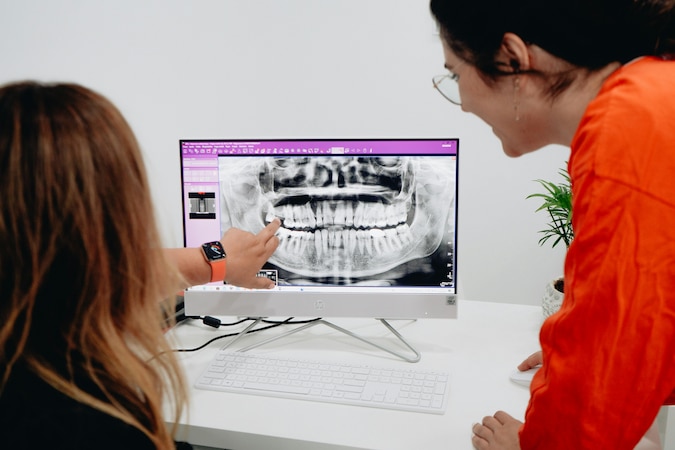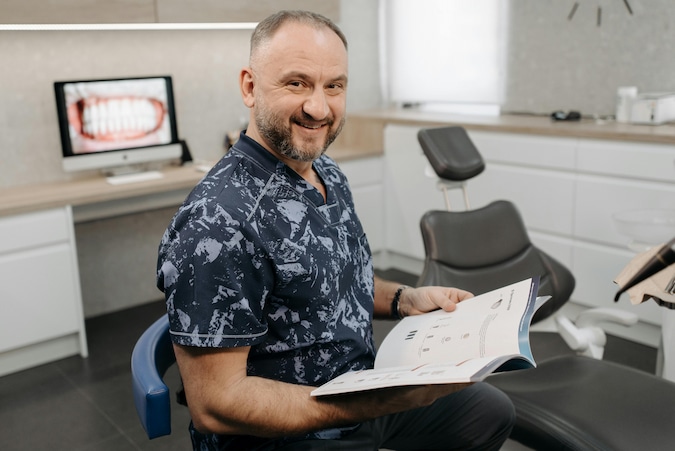
Comprehensive Glossary of Common Dental Terms

Understanding dental terms is crucial for informed decision-making about oral health. Our glossary provides clear definitions of common dental terms, helping you feel confident in dental visits and treatment plans. Whether you’re exploring dental insurance options with SelfGood or simply want to be more informed about your oral health, this glossary is here to support you.
At SelfGood, we strive to empower individuals with the knowledge they need to make informed health and dental care decisions. This glossary will enhance your understanding of dental procedures and terms, bridging the communication gap between you and your dentist.
Key Takeaways:
- This glossary defines common dental terms to help you better understand oral health.
- It covers basic, preventive, restorative, and cosmetic dental terminology.
- A downloadable glossary is available for personal use during dental visits or research.
Basic Dental Terms

To navigate dental conversations, you should first understand basic dental anatomy and concepts.
- Tooth: The hard, calcified structure in the mouth used for chewing.
- Enamel: The outer protective layer of a tooth.
- Gum (Gingiva): The soft tissue that surrounds and protects the teeth.
These terms form the foundation of dental knowledge, essential for understanding more complex procedures.
Preventive Dental Care Terms
Preventive dental care focuses on maintaining oral health to avoid dental issues. Key terms include:
- Cleaning (Prophylaxis): A routine procedure to remove plaque and tartar from teeth.
- Check-up: A dental exam to assess overall oral health and detect early problems.
- Fluoride: A mineral used to strengthen enamel and prevent cavities.
- Sealants: Protective coatings applied to teeth to prevent decay.
By understanding these terms, you can engage in preventive care conversations with your dentist, ensuring optimal oral health.
Restorative Dental Care Terms
When dental issues arise, restorative care repairs damaged teeth.
- Filling: Material used to restore a tooth damaged by decay.
- Crown: A dental restoration that covers a damaged tooth to restore function.
- Bridge: A prosthetic device that replaces missing teeth by anchoring to adjacent natural teeth.
- Inlay/Onlay: Custom-made restorations used when a filling isn’t enough, covering part of a tooth.
Restorative terms help you understand the procedures your dentist may recommend after a diagnosis.
Cosmetic Dentistry Terms
Cosmetic dentistry improves the appearance of your smile. Common terms include:
- Veneers: Thin shells placed over teeth to enhance appearance.
- Whitening (Bleaching): A process to lighten the color of teeth.
- Bonding: A procedure using resin to repair or improve the appearance of teeth.
Knowing these terms can help you make decisions about elective procedures designed to enhance your smile.
Orthodontics Terms
Orthodontics focuses on aligning teeth and jaws. Common terms include:
- Braces: Devices used to straighten teeth.
- Retainers: Appliances worn to maintain teeth alignment after braces.
- Aligners: Clear trays that gradually adjust teeth positioning.
Understanding orthodontic terms helps you engage in discussions about treatment options for improving alignment.
Periodontics Terms

Periodontics specializes in gum health. Key terms include:
- Gingivitis: Inflammation of the gums caused by plaque buildup.
- Periodontitis: Severe gum infection leading to damage to soft tissue and bone.
- Scaling and Root Planing: A deep cleaning procedure used to treat gum disease.
Periodontal health is essential for overall oral well-being, making it important to know these terms.
Endodontics Terms
Endodontics involves treating the inside of the tooth. Relevant terms include:
- Root Canal Therapy: A procedure to treat infection in the tooth’s pulp.
- Pulp: The soft tissue inside the tooth, containing nerves and blood vessels.
- Abscess: A pocket of infection in or around the root of a tooth.
Knowing these terms can help you understand root canal procedures and other treatments for infected teeth.
Prosthodontics Terms
Prosthodontics deals with tooth replacement. Common terms include:
- Dentures: Removable appliances to replace missing teeth.
- Implants: Titanium posts inserted into the jaw to support artificial teeth.
- Partials: Removable appliances replacing one or more missing teeth, but not a full set.
These terms are key to understanding your options for restoring function and aesthetics when teeth are missing.
Downloadable Glossary of Dental Terms
How to Access and Use the Downloadable Glossary
You can download theglossary of common dental termsin PDF or Word format. This resource is designed to help you understand dental procedures and terms more easily, and it’s a handy tool to bring along to dental visits.
Interactive Use Cases for the Downloadable Glossary
- During dental visits: Use the glossary to ask your dentist questions about unfamiliar terms.
- Researching treatments: Refer to the glossary when researching potential treatments online.
- Educational tool: Share the glossary with family members to help them understand oral health terminology.
Final Thoughts
Understanding common dental terms empowers you to take charge of your oral health. Whether you’re discussing treatment plans or undergoing routine exams, knowing the terminology can help you communicate better with your dentist. Download the glossary today to stay informed and confident about your dental care.
Frequently Asked Questions
What is the Most Common Dental Term Patients Should Know?
Patients should be familiar with the termplaque, as it is a major cause of tooth decay and gum disease.
Why is it Important to Understand Dental Terminology?
Understanding dental terminology allows you to make informed decisions about your oral health and actively participate in your dental care.
Can I Ask My Dentist to Explain Dental Terms?
Absolutely! Dentists are always willing to explain terms and procedures to ensure you understand your care.
Sources:
1. American Dental Association. (n.d.). Comprehensive Dental Care Resources. Retrieved from https://www.ada.org
2. National Institute of Dental and Craniofacial Research. (n.d.). Research on Dental Health. Retrieved from https://www.nidcr.nih.gov
3. MouthHealthy by ADA. (n.d.). Oral Health Information for Patients. Retrieved from https://www.mouthhealthy.org



